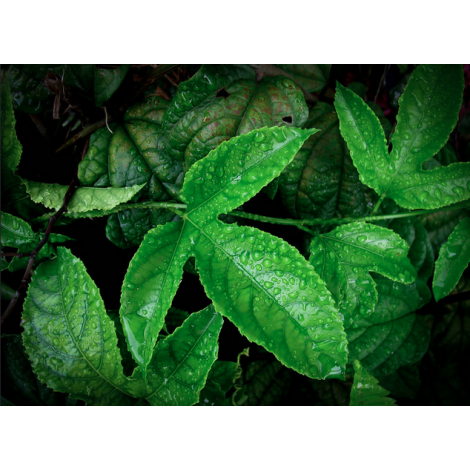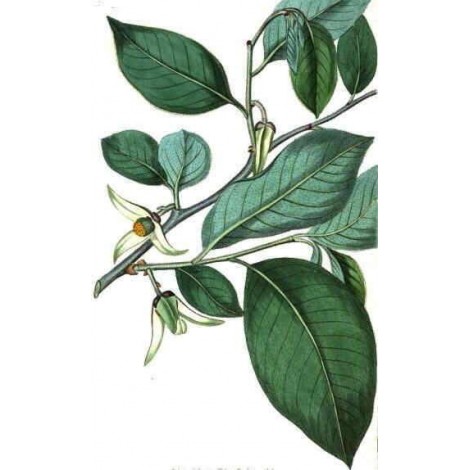Hojas medicinales para infusión
Hojas medicinales
Plantas medicinales: la guía completa de plantas medicinales
Desde hace miles de años, todas las civilizaciones del mundo han utilizado las plantas medicinales para prevenir y curar enfermedades. Incluso hoy en día, se utilizan en la composición de complementos alimenticios, medicamentos y una gran variedad de tratamientos.
Aunque no deben utilizarse como sustituto de la medicación prescrita por un médico, es posible incorporar algunas plantas medicinales a la rutina diaria para prevenir y curar dolencias menores y aumentar el bienestar. A continuación se ofrece información básica sobre las diferentes formas de utilizar y aplicar las hierbas que son fáciles y seguras de preparar por uno mismo
Concepto de infusión
Infusiones de plantas medicinales
Las infusiones son la forma más sencilla e infalible de disfrutar de los beneficios de las hierbas. Son principalmente las partes aéreas, las hojas y las cabezas de las flores, las que se prestan a este tipo de tratamiento.
Para preparar una infusión correctamente, sólo se necesita una tetera o una taza, un filtro y una tapa.
Para una taza, utilice aproximadamente una cucharadita de planta seca o dos cucharaditas de planta fresca. Para una preparación en tetera, añada 20 g de planta seca o 30 g de planta fresca a 500 ml de agua
Infusiones para dormir
Poner las plantas en el filtro y añadir agua a fuego lento. Dejar reposar de 5 a 10 minutos. Añadir miel y azúcar al gusto.
Decocciones
Las decocciones se utilizan para extraer los principios activos de las partes más duras de las plantas medicinales, como la corteza o las raíces, sometiéndolas a un tratamiento más intenso.
Para preparar su brebaje, coloque una gran cantidad de plantas medicinales en una cacerola y añada agua fría, preferiblemente agua de manantial que sea de calidad.
Se necesitan unos 20 g de planta seca o 40 g de planta fresca (o mezcla de plantas) para 750 ml de agua fría, reducida a 500 ml.
Tapar la olla y llevarla a ebullición. Dejar cocer a fuego lento hasta que el líquido se reduzca aproximadamente un tercio. Retirar del fuego y pasar por un colador. Una vez enfriado, el brebaje puede conservarse en la nevera hasta 48 horas. Se recomienda no exceder el consumo de 3 a 4 dosis de decocción al día - el equivalente a 500 ml de su brebaje.
Vinos tónicos
Las tónicas son bebidas vigorizantes que aumentan el bienestar y estimulan la digestión.
Para elaborarlos, se necesitan 200 g de hierbas secas o 300 g de hierbas frescas o 25 g de hierbas amargas secas para 1 litro de vino blanco o tinto.
El recipiente recomendado para la preparación de las tónicas es una jarra o bote de cerámica con un grifo en la base. Coloca las plantas en el frasco y cúbrelas completamente con el vino, ya que pueden enmohecerse en contacto con el aire, haciendo que el vino no sea saludable.
Después de dejar macerar las plantas en el vino durante unas 2 semanas, prénselo y fíltrelo y transfiéralo a botellas cerradas que hayan sido esterilizadas. Si se almacena en un lugar fresco y en un recipiente cerrado, el vino tónico se conservará de 3 a 4 semanas. La dosis diaria recomendada es de un vaso de licor -unos 70 ml- al día.
Jarabes de hierbas medicinales
Los jarabes y cordiales consisten en añadir azúcar y/o miel a las infusiones o decocciones y así conservarlas durante más tiempo. 500 ml de infusión o decocción -ver arriba- por 500 g de miel o azúcar sin refinar. Para preparar su jarabe o cordial, vierta su infusión o decocción en un cazo y añada la miel o el azúcar.
Dejar actuar las hierbas durante 15 minutos (para las infusiones) y 30 minutos (para las decocciones). Apriete la planta para recoger todo el líquido posible. Con un embudo, vierta el jarabe o el cordial en botellas de vidrio previamente esterilizadas, preferiblemente utilice botellas manchadas. Cierra las botellas con corchos y guárdalas en un lugar fresco y oscuro.
La dosis diaria recomendada para jarabes y cordiales es de 5 a 10 ml (1 a 2 cucharaditas) 3 veces al día. Si se guardan en un lugar fresco, los preparados pueden conservarse hasta 6 meses
Cataplasmas de hierbas medicinales
Los cataplasmas son preparados de hierbas que se aplican directamente sobre la piel y están destinados a aliviar el dolor muscular, los esguinces y las fracturas.
Para preparar una cataplasma, calienta la planta de tu elección durante unos 2 minutos y luego exprime el líquido. Primero cubre la parte del cuerpo que te duele con aceite, luego pon la planta aún caliente y cúbrela con una venda. Déjalo actuar hasta 3 horas. Repetir la cataplasma cada 2 ó 3 horas.
Enjuague bucal de hierbas medicinales
Los enjuagues bucales son una buena forma de tratar algunas enfermedades
Los enjuagues bucales son otra forma fácil y segura de aplicar las hierbas. Para preparar un enjuague bucal o unas gárgaras, empieza con una infusión y déjala reposar durante más tiempo -15 o 20 minutos- para potenciar los beneficios de tus hierbas astringentes. También puede utilizar una decocción. Colar y enjuagar la boca y la parte posterior de la boca con el preparado
Inhalaciones de vapor de hierbas medicinales
Las inhalaciones son un tratamiento fácil y eficaz para la bronquitis, la sinusitis, la fiebre del heno y el asma.
Los senos paranasales y las vías respiratorias se limpian gracias a la acción combinada del vapor y las sustancias antisépticas.
Para preparar una inhalación, vierta 1 litro de agua hirviendo en un recipiente grande y añada 10 gotas de aceite esencial, mezclándolo todo.
También puede dejar 25 g de hierbas en infusión en 1 litro de agua durante 15 minutos. A continuación, coloque la cabeza sobre el recipiente, cúbrala con una toalla e inhale el vapor durante 10 minutos. Después de la inhalación, permanezca en una habitación caliente durante al menos 15 minutos para permitir que las secreciones se eliminen de las vías respiratorias
Aunque estos tratamientos caseros a base de hierbas no sustituyen a los medicamentos convencionales -¡especialmente para las afecciones más graves! - Descubrirá que estos pequeños trucos mejorarán su comodidad y bienestar a diario













